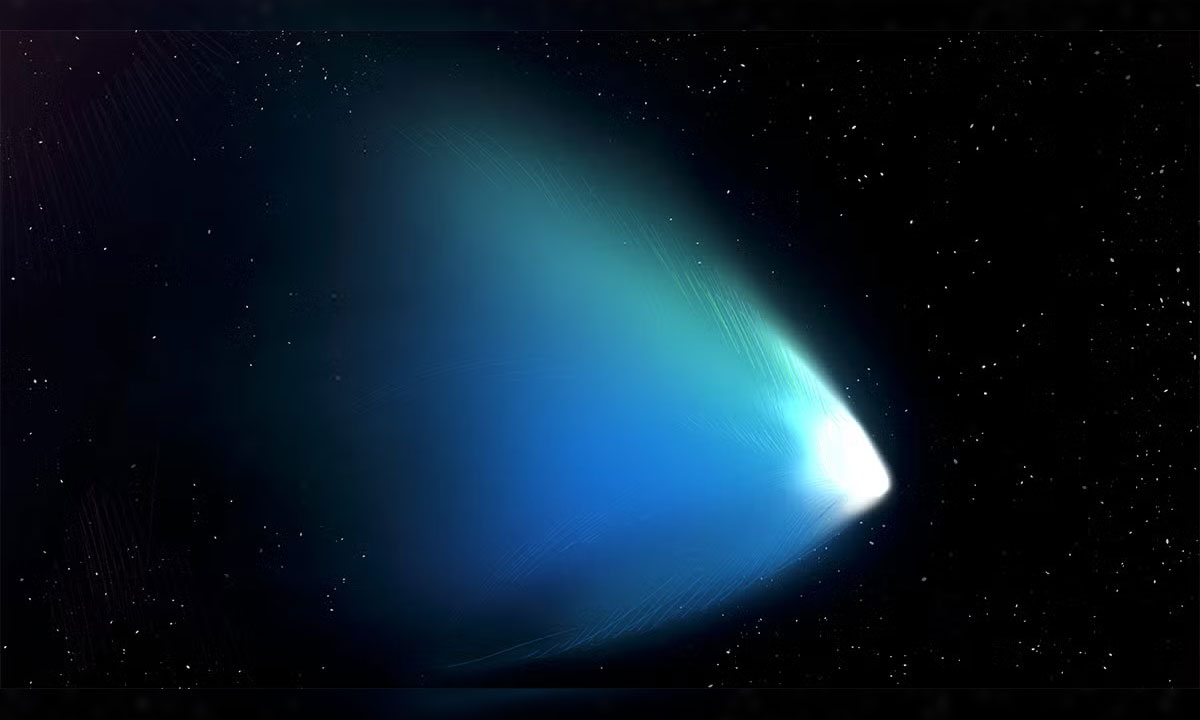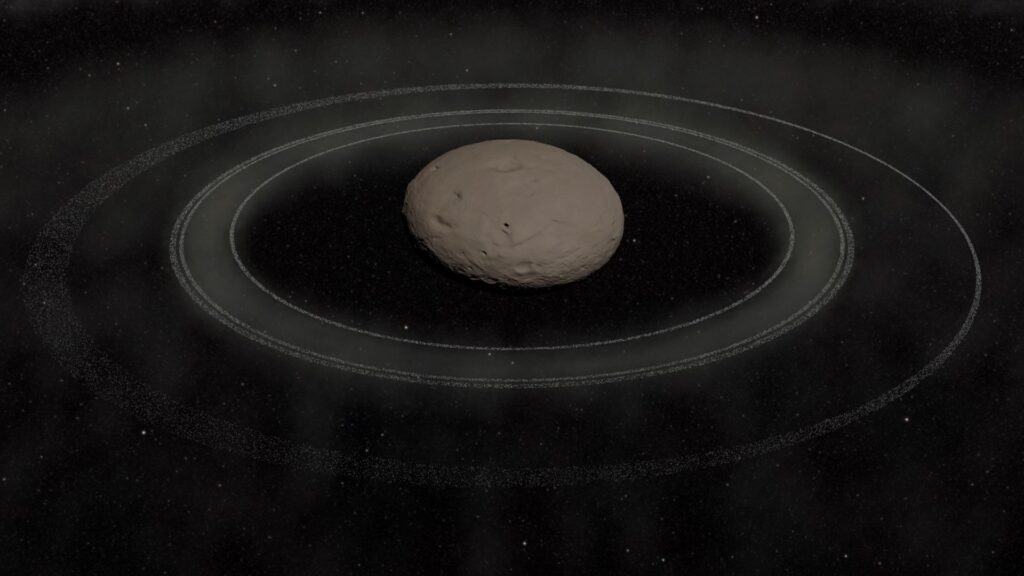In a universe where change typically unfolds over many years, astronomers have a rare front-row seat to watch a small icy world beyond Saturn build a brand new set of rings in real time.
A team of Brazil-based astronomers has discovered that the band of material orbiting Chiron (2060), a 125-mile-wide (200-kilometer-wide) object that orbits the sun between Saturn and Uranus, is new and still taking shape. The discovery suggests that the area around Chiron is in a state of transition between a chaotic cloud of debris and a fully formed ring system, providing scientists with a rare snapshot of ongoing ring formation that has never been directly witnessed before.
you may like
Chiron joins the asteroid Chariklo and the dwarf planets Haumea and Quaoar as one of only four small worlds in the solar system known to have rings, but it may be the most dynamic of them all.
The changes in Chiron’s environment, detailed in a paper published Oct. 14 in Astrophysical Journal Letters, could help scientists understand how small icy objects and giant planets like Saturn and Uranus built their iconic rings billions of years ago.
Ring in progress
Comprised of rock, water ice, and organic compounds, Chiron orbits between Jupiter and Neptune and belongs to a strange group of objects called centaurs that behave partly like asteroids and partly like comets. Chiron orbits the sun once every 50 Earth years.
Since its discovery in 1977, astronomers have seen it occasionally brighten and sprout a faint tail, evidence that it occasionally ejects gas and dust into space.
In September 2023, as Chiron briefly passed in front of a distant star as seen from Earth, Brazil’s Pico dos Díaz Observatory detected small dips that appeared repeatedly in the starlight. When the researchers compared this data to similar phenomena cataloged in 2011, 2018, and 2022, they found that three separate, dense rings orbiting at distances of about 170 to 270 miles (270 to 430 km) from Chiron’s center had remained in place for more than a decade.

In the 2023 data, the researchers also discovered a new disk-like structure not previously seen, extending from about 120 miles around Chiron to up to 500 miles (200-800 km). This wider, diffuse disk likely formed within the past decade, Pereira said, and was likely formed by collisions or explosions that released new material into orbit.
Interestingly, the researchers also discovered a faint outer feature nearly 870 miles (1,400 kilometers) away from Chiron. Far beyond what is known as the Roche limit, the new research paper says, this is the boundary where material from the rings collects on the moon rather than remaining as fragments.
you may like
“This is the first time that traces of any material have been detected in the area,” Pereira told LiveScience, adding that higher-resolution observations are needed to confirm that. “Once you cross that limit, the particles that form the ring should start spontaneously coalescing into satellites, but something seems to be preventing that.”
Researchers are unsure of the cause of Chiron’s strange configuration. One possibility is that volatile ice beneath its surface exploded like a comet, releasing dust and ice that later settled in orbit. The other possibility is that a small moon broke apart, spreading debris along Chiron’s equator, according to the new study.
The latter theory could also explain Chiron’s steady brightening over the past decade, which is difficult to explain by cometary activity alone, Pereira said.
Other experts say the discovery raises new questions about how rings around small objects can persist for long periods of time.
“Something may be adding energy to these particles, allowing them to stay outside the limits without coalescing,” Kayleigh Rockcliffe, a postdoctoral researcher at NASA’s Goddard Space Flight Center in Maryland, who was not involved in the paper, told Live Science via email.
It’s also possible that the rings are very diffuse or simply haven’t been around long enough to coalesce, Rockcliffe said. “Perhaps they just formed recently and haven’t had a chance to form a small centaur slet.”
Astronomers hope to capture more events in which Chiron passes in front of distant stars to see if Chiron’s rings are truly evolving and not just looking different from our changing vantage points. Such phenomena, recorded by high-speed cameras at observatories spanning multiple continents, are the only direct way to determine whether the opacity, width, and position of the disk’s material is changing. Pereira says the signature reveals active redistribution of dust and ice, providing direct evidence of ongoing evolution.
“But the ideal scenario to satisfy our curiosity would be a space mission dedicated to in-situ observations of this interesting system,” Pereira said.
Source link

